
How to Improve Gut Health with Ayurveda
19 Dec, 2025Introduction Ayurveda has always emphasised that the root of health and disease lies in the gu...
Read more
Ayurveda has always emphasised that the root of health and disease lies in the gut. The gastrointestinal system, comprising the stomach, intestines, and colon, is responsible not only for digesting food and absorbing nutrients but also for eliminating metabolic waste and toxins. When digestion functions optimally, nourishment flows smoothly into tissues and vitality is maintained. When digestion is impaired, disease begins.
In Ayurveda, the gut is governed by Agni (digestive fire) and regulated by the Doshas. Unlike modern approaches that focus mainly on digestion or microbiota, Ayurveda views gut health as an integrated system involving digestion, metabolism, elimination, mental balance, and immunity. A healthy gut reflects balanced Agni, absence of toxins (Ama), and unobstructed bodily channels (Srotas).
Balanced Agni ensures complete digestion, efficient metabolism, and proper nourishment of tissues, ultimately leading to the formation of Ojas, the essence of immunity and vitality. When Agni is disturbed, digestion becomes incomplete, and toxins accumulate.
Ayurveda describes four functional states of Agni. Mandagni (weak digestive fire) leads to bloating, gas, heaviness, and Ama formation. Tikshnagni (overactive fire) causes excessive hunger and acidity. Vishamagni (irregular fire), commonly associated with Vata imbalance, results in erratic appetite and indigestion. Samagni, the balanced state, supports smooth digestion and long-term health.
A balanced agni is the cornerstone of optimum gut health. It ensures optimum digestion, metabolism, movement of toxins towards elimination, nourishment of tissues, and leads to the formation of ojas, which may be summed up as the essence of vitality.
As per Ayurveda, agni may exist in four states:
Samagni: In this balanced state, agni supports smooth digestion and long-term health.
Mandagni: This means a weakened digestive fire, which creates
bloating, gas, heaviness, and the formation of toxins.
Tikshnagni: Or an overactive digestive fire triggers an unusually high state of hunger and hyperacidity.
Vishamagni: In this state, agni is impacted by Vata imbalance, which leads to fluctuating appetite and indigestion.
• Gut health depends not only on what we eat, but also on how, when, and in what mental state food is consumed. Disturbances in these factors weaken Agni.
• Mental stress and emotional imbalance disrupt the gut–brain connection, impair digestion, and aggravate Vata or Pitta, leading to bloating, gas, acidity, or constipation.
• Anxiety, suppressed emotions, and unresolved stress interfere with parasympathetic nervous system activity, reducing digestive efficiency and regular elimination.
• Irregular eating habits such as skipping meals, eating late at night, or eating before the previous meal is digested destabilise Agni.
• Improper food choices, including dry, stale, frozen, overly processed, or incompatible foods, increase digestive strain and promote Ama formation.
• Consuming cold drinks with meals dampens digestive fire and slows metabolism.
• Lack of a consistent daily routine (Dinacharya) weakens digestive rhythm and increases vulnerability to chronic gut imbalance.
• Excessive anger and emotional intensity, which aggravate Pitta, contribute to hyperacidity, inflammation, and long-term digestive disturbance.
Ayurveda places strong emphasis on Dinacharya (daily routine), as regularity strengthens Agni (digestive fire) and calms the nervous system, which is closely linked to digestion. Aligning the body’s internal rhythm and hunger patterns helps prevent stress-related digestive disturbances.
A healthy Dinacharya Ayurvedic routine includes:
• Wake up before 6:00 AM and go to bed by 10:00 PM to align with natural circadian rhythms.
• Clean the tongue each morning to remove toxins (ama) and stimulate salivary enzymes.
• Drink warm water upon waking to support digestion and elimination.
• Maintain fixed meal timings to synchronise with the body’s biological clock.
• Take a short walk before meals to gently stimulate digestive activity.
• Engage in regular, moderate physical activity to improve bowel regularity and circulation.
• Avoid suppressing natural urges, especially the urge to defecate.
• Practise daily meditation for 15–20 minutes. Transcendental Meditation, practised twice daily, is especially beneficial for reducing stress and supporting digestion and mental stability.
• Perform rhythmic breathing exercises (Pranayama) to activate the parasympathetic (rest-and-digest) nervous system and calm the mind and body.
Midday is when Agni is strongest, making lunch the most substantial meal of the day. Meals should be warm, freshly prepared, and spiced with ginger, cumin, coriander, fennel, and similar digestive herbs to reduce gas and bloating. Spiced buttermilk after lunch supports digestion and balances Vata and Kapha.
Dinner should be light, warm, and taken early, ideally before sunset or at least three hours before sleep. Heavy, raw, or cold foods at night burden digestion and promote Ama. Soups and simple cooked meals are ideal. Eating mindfully, chewing thoroughly, and avoiding screens further support digestion.
Ayurveda emphasises balance through the inclusion of all six tastes (Rasa): sweet, sour, salty, pungent, bitter, and astringent in appropriate proportions. This ensures nutritional completeness, prevents cravings, and maintains digestive harmony.
Moong dal khichari is a classic, light yet nourishing meal. Spiced buttermilk kindles Agni and aids digestion. A Sattvic diet, fresh, whole, minimally processed foods such as fruits, vegetables, whole grains, legumes, nuts, seeds, herbs, and spices supports clarity, calmness, and gut balance. Mindful eating in a peaceful environment enhances assimilation and gut–mind harmony.
Responds well to gentle bowel-regulating measures such as Triphala, soaked raisins, figs, roasted flax seeds, and adequate intake of warm fluids to support Apana Vata.
Improves with carminative herbs including hing, cumin, and ajwain with black salt, along with supportive formulations such as Dizomap to enhance digestion and reduce post-meal discomfort.
Benefits from cooling and soothing remedies like mulethi, amla, coconut water, fennel with mishri, or gulkand, which help calm Pitta and protect the digestive lining.
Require deeper correction through lifestyle adjustments, gut cleansing, and targeted herbal support using bael pulp, kutaja, nagarmotha, and appropriate arishta preparations under Ayurvedic guidance.
Ayurveda recognises that mental balance is inseparable from digestive health. Practices like meditation, yoga, and stress-reducing routines calm the nervous system, lower stress hormones, and improve gut function. Modern research supports this connection, showing improved neuroplasticity and resilience with such practices. A calm mind supports a balanced Agni, and a healthy gut supports emotional stability.
Gut Health Tablets support digestion and elimination, balance Apana Vata, strengthen Agni, and help prevent the formation and accumulation of Ama.
Amlant Tablets help balance excess acidity, soothe the digestive tract, and promote overall digestive comfort.
Triphala Tablets / Triphala Churna gently cleanse the colon, support regular bowel movements, and promote long-term gut health without dependency.
Digestive Care Therapy Kit provides comprehensive Ayurvedic support for chronic digestive issues such as indigestion, sluggish digestion, gas, and acidity.
Dizomap Tablets relieve post-meal indigestion, gas, and bloating while supporting efficient digestion and intestinal comfort.
In Ayurveda, gut health extends beyond digestion; it is the foundation of immunity, mental clarity, and overall long-term vitality. By maintaining a balanced Agni, preventing Ama, following a supportive daily routine, and choosing appropriate foods and remedies, digestive health can be naturally restored and sustained. Consistency, awareness, and alignment with natural rhythms are the true medicines for lasting gut wellness.
Improve Gut Health with Ayurveda — Shop Today
Introduction Ayurveda has always emphasised that the root of health and disease lies in the gu...
Read moreWinter brings a shift in the environment: cold, dryness, wind, and longer nights. Ayurveda believ...
Read moreVulnerable bones and joints are a cause for concern through the year as they affect the quality o...
Read moreWinter brings a sharp drop in temperature, lower humidity, and harsh winds, all of which strip mo...
Read moreAyurveda and modern allopathy are two scientifically established healthcare systems that share a ...
Read moreअस्थमा को फेफड़ों का रोग या lungs disease कहा जाता है। इस बीमारी में बच्चों और बड़ों के श्वासनली मे...
Read moreAyurveda believes that by balancing the doshas, detoxifying the body, and strengthening the kidne...
Read moreWhat is Panchakarma? Panchakarma is considered a profound healing modality in Ayurveda, known ...
Read moreWhat Is ‘Rasayana’ & ‘Rasayana Therapy’? The term ‘Rasayana’ is composed of two words: ...
Read moreAs the winter cold deepens, the air gets heavier with smog, dust, and toxic fumes. Hazardous leve...
Read moreAyurvedic View on Vegetarian and Vegan Diets Ayurveda naturally leans toward a predominantly pla...
Read moreThere must be many questions in the mind of people that what exactly does vigor and vitality mean...
Read moreThe air we breathe has a direct impact on our lungs, immunity, and overall vitality. With rising ...
Read moreIntroduction: Climate Shift Meets Ayurveda If you’re feeling an unusually sharp chill this winte...
Read moreIntroduction — Why Winter Pollution Weakens Your Immunity Winter brings cold, heavy, damp, and c...
Read moreIntroduction — How Pollution Damages Your Skin The skin is the largest organ and is in constan...
Read moreHow modern pollutants disrupt Vata, Pitta, and Kapha, and what Ayurveda recommends for protection...
Read moreWhy Your Toothpaste Choice Matters Oral health is deeply connected to overall health. Research i...
Read moreIntroduction Castor oil, Eranda Taila, or Arandi Oil, holds a special place in Ayurveda as one o...
Read moreUnderstanding Ayurvedic Oral Care Imagine a winter morning, the air crisp and cool, with a gentl...
Read moreWhen “Glow Oils” Meet Oily Skin Fears Many people with oily or acne-prone skin hesitate to try fa...
Read moreIntroduction — The Healing Power of Ayurvedic Oil Massage Ayurvedic body massages (abhyanga) a...
Read moreIntroduction: The Modern Detox Dilemma Detoxing has become a modern-day ritual, from green juices...
Read moreIntroduction to Guggul (Commiphora Mukul) Among the vast pharmacopeia of Ayurveda, few herbs hold...
Read moreWhen Your Body Speaks Through Fatigue, Fog, and Imbalance When you constantly feel tired, sluggi...
Read moreIntroduction: When Your Body Speaks in Whispers Have you ever felt tired even after a full night...
Read moreTriphala Ghrita: What is it? Triphala Ghrita is a traditional Ayurvedic formulation prepared b...
Read moreIntroduction – Embrace the Stillness of Winter with Warmth & Care Winter may appear harsh ...
Read moreDark spots may seem like a skin-deep concern, but Ayurveda sees them as whispers from within, sig...
Read moreIn Ayurveda, the human body is governed by three fundamental bio-energies known as Doshas: Vata, ...
Read moreCoconut oil has long been a household favourite, from traditional Ayurvedic rituals to modern kit...
Read moreIntroduction to Virgin Coconut Oil Virgin Coconut Oil (VCO) is more than a kitchen essential; ...
Read moreIntroduction – What Is Cold-Pressed Mustard Oil (Kachi Ghani)? Imagine walking through a vibrant...
Read moreIntroduction: Tulsi "The Queen of Herbs in Ayurveda" Tulsi (Ocimum sanctum), considered to be a ...
Read moreWhat Is Kapha Dosha? Understanding Its Role in Ayurveda वायु: पित्तं कफश्चेति त्रयो दोषाः समासतः ...
Read moreIntroduction – Ayurveda and the Science of Doshas In Ayurveda, health is not merely the absence ...
Read moreIntroduction: The Ayurvedic Elixir for Skin In Ayurveda, ghee (ghṛita) is celebrated as one of t...
Read moreWhat Is Organic Ghee? Organic ghee is clarified butter made from milk produced under organic far...
Read moreIntroduction In Ayurveda, ghee (Ghrita) is more than a cooking fat; it’s a therapeutic elixir th...
Read moreTurmeric: The Indian Herb with ‘Global’ Presence In Ayurveda, turmeric is known as Haridra, ...
Read moreWhat is Hypertension? Hypertension, or high blood pressure, is a chronic condition in which th...
Read moreThe Sweet Shift Toward Organic Wellness Modern diets are overloaded with refined sugar, an ingred...
Read moreWhat is Jaggery? (Gud) Jaggery, commonly known as Gur or Gud in Hindi, Bellam in Telugu, Vella...
Read moreUnderstanding Diabetes in Ayurveda (Madhumeha) In Ayurveda, diabetes mellitus is known as Madhume...
Read moreIntroduction – Tea as a Wellness Ritual Tea is more than a beverage; it’s a wellness ritual. Fro...
Read moreUnderstanding Obesity in Today’s Lifestyle Obesity is no longer a fringe problem; it’s the norm ...
Read moreTooth sensitivity isn’t just a fleeting issue—it’s a persistent battle for many people. The sharp...
Read moreIntroduction: Why Timing Matters for Green Tea In recent years, green tea has received plenty ...
Read moreIntroduction Triphala tri (three) + phala (fruits) is one of Ayurveda’s most trusted, time-tested...
Read moreIntroduction: Why Tea is More Than Just a Beverage When most people think of tea, they imagine...
Read more Guide to Immunity
Guide to Immunity

Introduction Ayurveda has always emphasised that the root of health and disease lies in the gu...
Read more
Winter brings a shift in the environment: cold, dryness, wind, and longer nights. Ayurveda believ...
Read more
Vulnerable bones and joints are a cause for concern through the year as they affect the quality o...
Read more
Winter brings a sharp drop in temperature, lower humidity, and harsh winds, all of which strip mo...
Read more
Ayurveda and modern allopathy are two scientifically established healthcare systems that share a ...
Read more
अस्थमा को फेफड़ों का रोग या lungs disease कहा जाता है। इस बीमारी में बच्चों और बड़ों के श्वासनली मे...
Read more
Ayurveda believes that by balancing the doshas, detoxifying the body, and strengthening the kidne...
Read more
What is Panchakarma? Panchakarma is considered a profound healing modality in Ayurveda, known ...
Read more
What Is ‘Rasayana’ & ‘Rasayana Therapy’? The term ‘Rasayana’ is composed of two words: ...
Read more
As the winter cold deepens, the air gets heavier with smog, dust, and toxic fumes. Hazardous leve...
Read more
Ayurvedic View on Vegetarian and Vegan Diets Ayurveda naturally leans toward a predominantly pla...
Read more
There must be many questions in the mind of people that what exactly does vigor and vitality mean...
Read more
The air we breathe has a direct impact on our lungs, immunity, and overall vitality. With rising ...
Read more
Introduction: Climate Shift Meets Ayurveda If you’re feeling an unusually sharp chill this winte...
Read more
Introduction — Why Winter Pollution Weakens Your Immunity Winter brings cold, heavy, damp, and c...
Read more
Introduction — How Pollution Damages Your Skin The skin is the largest organ and is in constan...
Read more
How modern pollutants disrupt Vata, Pitta, and Kapha, and what Ayurveda recommends for protection...
Read more
Why Your Toothpaste Choice Matters Oral health is deeply connected to overall health. Research i...
Read more
Introduction Castor oil, Eranda Taila, or Arandi Oil, holds a special place in Ayurveda as one o...
Read more
Understanding Ayurvedic Oral Care Imagine a winter morning, the air crisp and cool, with a gentl...
Read more
When “Glow Oils” Meet Oily Skin Fears Many people with oily or acne-prone skin hesitate to try fa...
Read more
Introduction — The Healing Power of Ayurvedic Oil Massage Ayurvedic body massages (abhyanga) a...
Read more
Introduction: The Modern Detox Dilemma Detoxing has become a modern-day ritual, from green juices...
Read more
Introduction to Guggul (Commiphora Mukul) Among the vast pharmacopeia of Ayurveda, few herbs hold...
Read more
When Your Body Speaks Through Fatigue, Fog, and Imbalance When you constantly feel tired, sluggi...
Read more
Introduction: When Your Body Speaks in Whispers Have you ever felt tired even after a full night...
Read more
Triphala Ghrita: What is it? Triphala Ghrita is a traditional Ayurvedic formulation prepared b...
Read more
Introduction – Embrace the Stillness of Winter with Warmth & Care Winter may appear harsh ...
Read more
Dark spots may seem like a skin-deep concern, but Ayurveda sees them as whispers from within, sig...
Read more
In Ayurveda, the human body is governed by three fundamental bio-energies known as Doshas: Vata, ...
Read more
Coconut oil has long been a household favourite, from traditional Ayurvedic rituals to modern kit...
Read more
Introduction to Virgin Coconut Oil Virgin Coconut Oil (VCO) is more than a kitchen essential; ...
Read more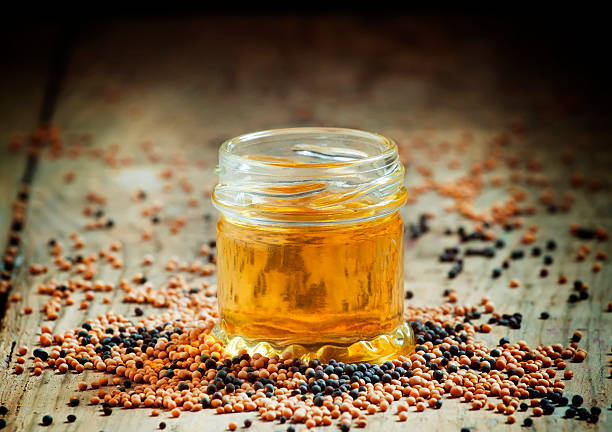
Introduction – What Is Cold-Pressed Mustard Oil (Kachi Ghani)? Imagine walking through a vibrant...
Read more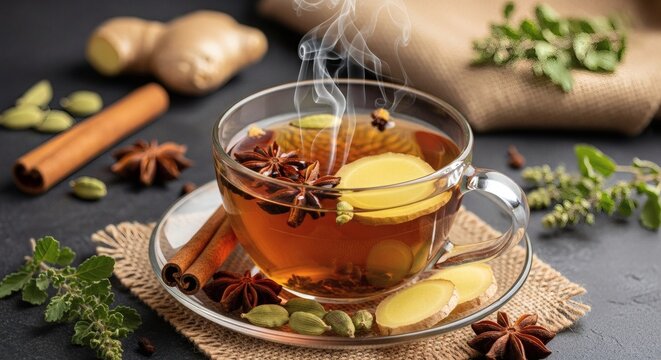
Introduction: Tulsi "The Queen of Herbs in Ayurveda" Tulsi (Ocimum sanctum), considered to be a ...
Read more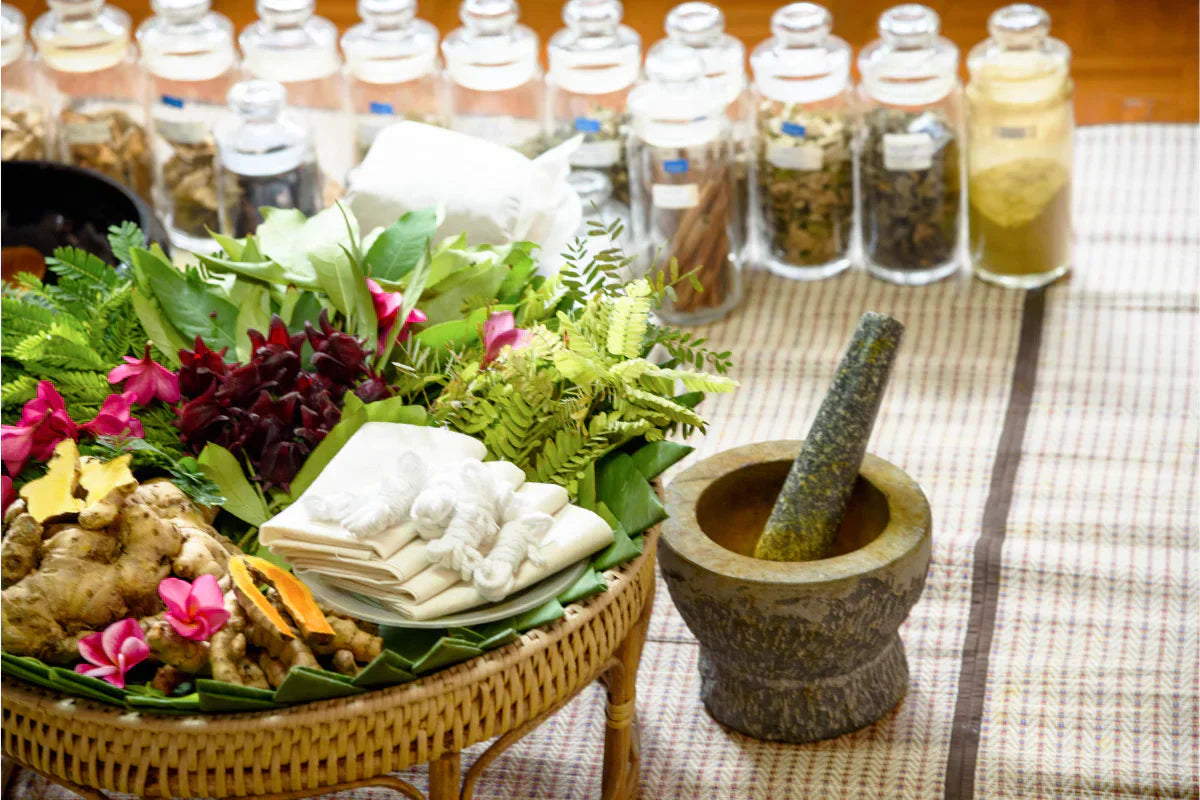
What Is Kapha Dosha? Understanding Its Role in Ayurveda वायु: पित्तं कफश्चेति त्रयो दोषाः समासतः ...
Read more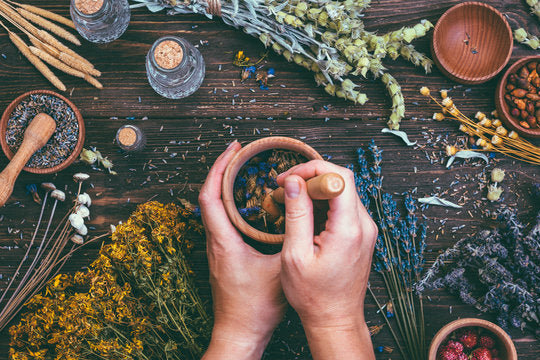
Introduction – Ayurveda and the Science of Doshas In Ayurveda, health is not merely the absence ...
Read more
Introduction: The Ayurvedic Elixir for Skin In Ayurveda, ghee (ghṛita) is celebrated as one of t...
Read more
What Is Organic Ghee? Organic ghee is clarified butter made from milk produced under organic far...
Read more
Introduction In Ayurveda, ghee (Ghrita) is more than a cooking fat; it’s a therapeutic elixir th...
Read more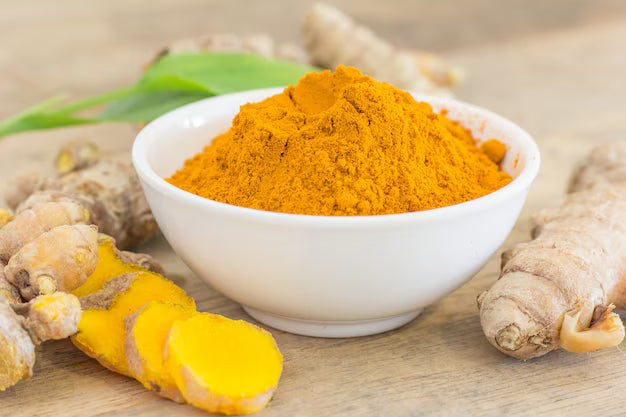
Turmeric: The Indian Herb with ‘Global’ Presence In Ayurveda, turmeric is known as Haridra, ...
Read more
What is Hypertension? Hypertension, or high blood pressure, is a chronic condition in which th...
Read more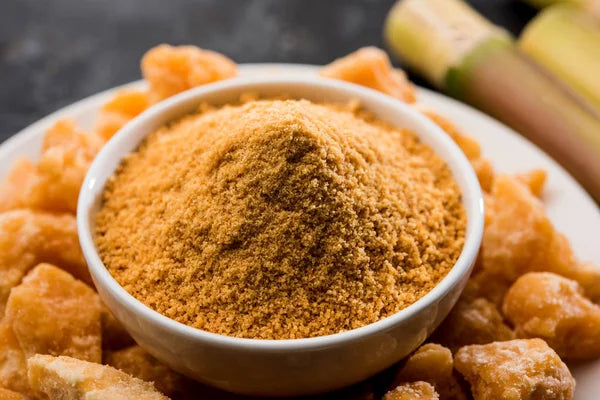
The Sweet Shift Toward Organic Wellness Modern diets are overloaded with refined sugar, an ingred...
Read more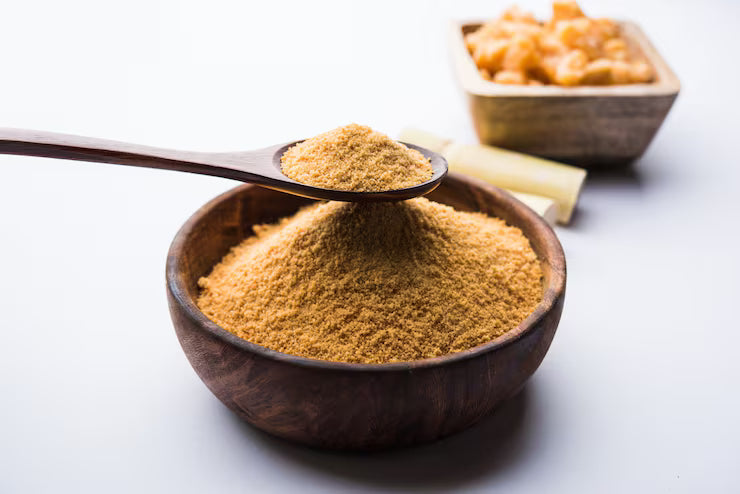
What is Jaggery? (Gud) Jaggery, commonly known as Gur or Gud in Hindi, Bellam in Telugu, Vella...
Read more
Understanding Diabetes in Ayurveda (Madhumeha) In Ayurveda, diabetes mellitus is known as Madhume...
Read more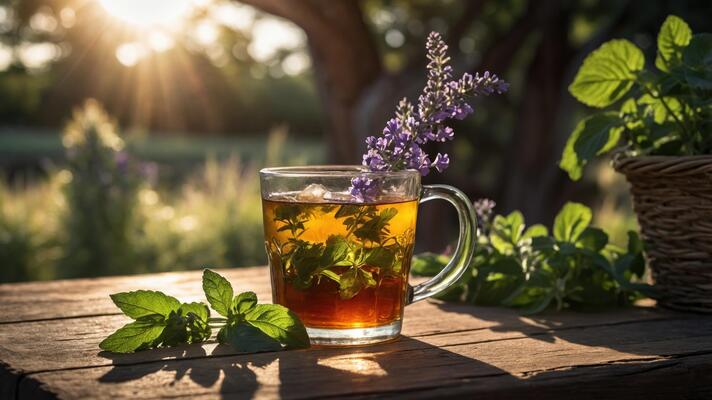
Introduction – Tea as a Wellness Ritual Tea is more than a beverage; it’s a wellness ritual. Fro...
Read more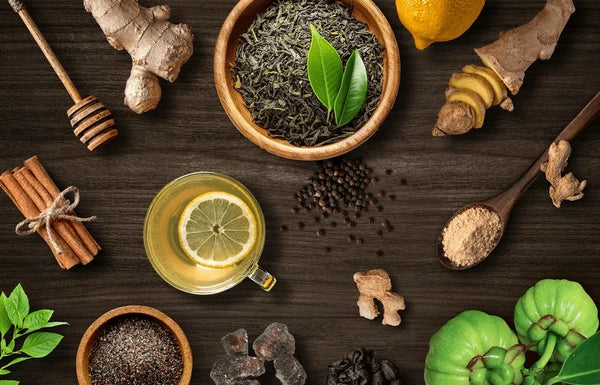
Understanding Obesity in Today’s Lifestyle Obesity is no longer a fringe problem; it’s the norm ...
Read more
Tooth sensitivity isn’t just a fleeting issue—it’s a persistent battle for many people. The sharp...
Read more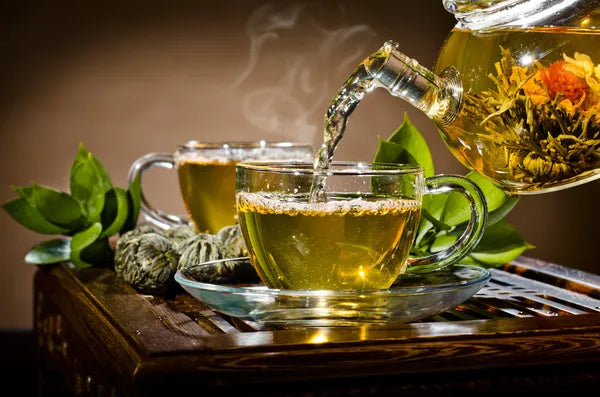
Introduction: Why Timing Matters for Green Tea In recent years, green tea has received plenty ...
Read more Featured Articles
Featured Articles
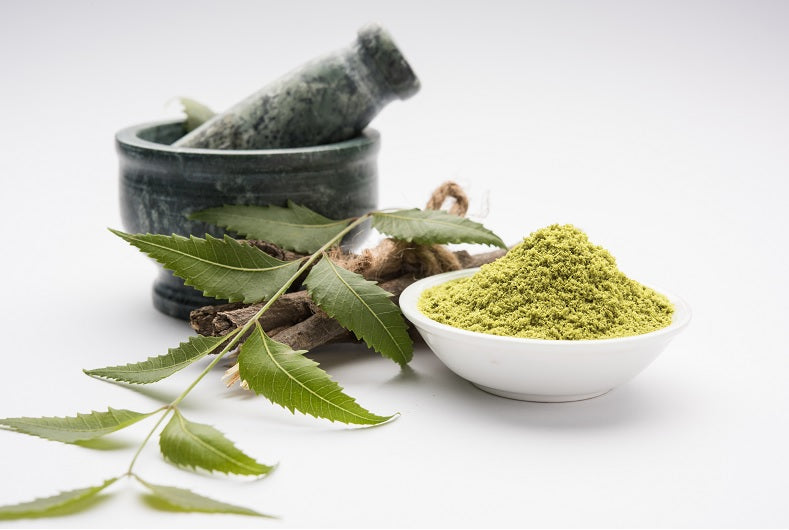
Are you struggling with your oral health because of your eating habits? Are toothaches becoming your new normal because you have not been brushing well? Is eating ice cream a big NO, as you have brushed a little too much? A lot of you have been made to believe that your oral issues emanate from what you are doing wrong or not doing the right thing. What if we tell you that you have been approaching this all wrong and trying to solve the problems topically instead of addressing the root cause? Do you ever think about the real reason for these significant dental issues?
Ayurveda helps you focus on the fundamentals and identify the root cause. It is the science of treating the underlying imbalances and correcting the cause in a completely natural and effective way. Among its numerous health benefits, when it comes to oral health, Ayurvedic Toothpaste is a game-changer for preserving strong and healthy teeth. A natural and effective alternative to the chemical-laden equivalents and a beneficial synergy of herbs that help in holistic dental care. Surprising, right!? Well, read on to turn your surprise into a new belief!


नित्यमध्मान तां तांस्तु व्याधिभिश्च विवर्जितः।
रसैश्च दन्तमूलानां रूक्षैराचाम्य विक्रियाम्॥
Meaning: Regularly cleaning your mouth makes your teeth and gums healthy and prevents diseases.
The Charaka Samhita mentions the importance of oral care in overall health. This is more than just information from ancient scriptures; much research has validated the role of a healthy mouth in a healthy body. A 2022 study in Frontiers of Microbiology highlighted this critical link: an imbalance in the oral microbiome causes periodontal disease and promotes cardiovascular disease development.
Wondering how? Saliva is the first fluid that is secreted during digestion. It lubricates the tongue and oral cavity and ensures that the whole digestive tract stays lubricated, along with the chewed food passed down to the stomach. It carries all microbes into your gut and is the most crucial link between oral and overall health
Saliva also contains some antimicrobial proteins and enzymes that keep harmful microorganisms from growing while ensuring the good ones thrive. However, any saliva production or composition imbalance can affect the oral microbiota. This could be due to poor oral hygiene, an unhealthy diet, or systemic health issues.
This imbalance can have dire consequences for oral health, such as dental caries, gum issues, and infections. Moreover, balanced saliva helps lubricate and break down food for easy digestion and ensures that teeth get essential minerals to maintain and repair themselves.

Dantadhaawan is an ancient Ayurvedic oral hygiene practice that involves using herbal twigs, AKA ‘‘Datoon’’, to clean teeth and gums. Commonly used twigs include those from the neem, babool, and liquorice plants. These twigs have antimicrobial properties that help maintain oral hygiene.
According to the Shadrasa (six tastes) in Ayurveda, every herb has a Rasa (dominant taste) that determines its properties and actions.
An ideal toothpaste must contain Katu, Tikta, Kashaya, and Madhura Rasa, each of which positively impacts maintaining the health of our oral cavity.
Let’s uncover the properties of these essential Rasas to know more:
|
Rasa |
Action |
|
Katu (Pungent) |
It deeply cleanses the oral cavity |
|
Tikta (Bitter) |
Antibacterial & antiseptic action |
|
Kashaya (Astringent) |
Provides pain relief |
|
Madhura (Sweet) |
Strengthens the gums & teeth |
You see, an Ayurvedic toothpaste not only cleanses your teeth but also gives Bala (strength) through the properties of the natural Dravyas (herbs) used in it.

It may sound complex, but formulating toothpaste at home is as easy as making a face pack! All you need is 10 grams of dry leaves or powders of neem, mulethi, jamun, and amalaki. Grind or mix them, and your dry toothpaste powder is ready! During every brushing session (preferably morning and evening), mix it with your *Dosha-appropriate adjuvants. Vata *Dosha* can mix sesame oil, Pitta *Dosha* can mix ghee, and Kapha *Dosha* can mix honey/mustard oil, and your quick, healthy toothpaste is ready!
If you’re a busy bee, not interested in DIYs, or find it difficult to source these ingredients, don’t worry! We have Maharishi Ayurveda Ayurdent Toothpaste. It is your one-stop solution to all your oral problems. It’s a unique formulation that works on your saliva and is suitable for all body types, irrespective of the Doshic predominance.
It contains neem for cleansing, triphala for balancing, and meswak & ginger for stimulating saliva. Ayurdent promotes holistic oral health naturally and provides protection from major oral problems like cavities, plaque, bleeding gums, toothache, sensitivity, and bad breath. It contains the goodness of 20 Ayurvedic ingredients and is free from SLS and fluoride. Certified by COSMOS Natural, it stands out for its authenticity compared to other Ayurvedic and herbal toothpaste. This innovative, non-foaming formula is a must-try in the category.
 Recent Blogs
Recent Blogs


As per Ayurveda, no two individuals are alike. Maharishi Ayurveda offers personalised treatment for each individual at all touch-points. Consult our expert Vaidyas to get root cause-based personalised treatment from the comfort of your home
CONSULT VAIDYA
















































